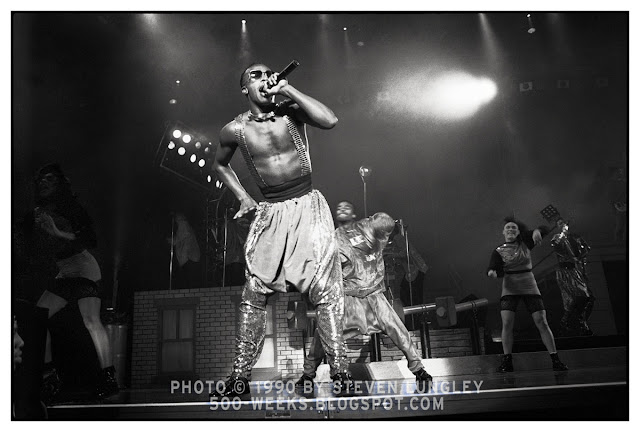That Alley Is Too Scary
500-Weeks #008
I was asked to create a cover for Counter Culture magazine, a publication for people who worked in the bar and restaurant industry. The issue’s lead story was about industry staff working the late shift and the dangers encountered when going home alone in the wee hours after last call.
The article referenced predators and the danger found in alleys. Not many streetlights, not very much foot traffic, no help or witnesses nearby. The concept was to create a crime scene that showed the worst possible outcome. The image had to dramatically convey the danger and - being a cover - to do it quickly. You always want a cover to be attention grabbing.
The plan was for a black and white image, to make the visual stark, but not lurid. I immediately thought of film noir, a genre of crime film made on low budgets, known for stylized, dramatically lit black and white photography.
So I started scouting for the appropriate alley. There are a lot of them in downtown Toronto and I already knew many of them as I’ve always been someone who walked around the city a lot, with a penchant for exploring little nooks and crannies. There were several candidates in my mind before I even began searching for the right location for this assignment. I spent about a week going out every night looking for the best combination of tight quarters, menacing surroundings and available lighting that would work on film in relation to how I intended to stage the scene. It’s not just the amount of light that is important, it is the placement of the light in relation to the subjects.
If you study classic film lighting techniques, very often the most dramatic lighting is backlighting. This means the light is coming from behind the main subject. It throws the shadows forwards, placing the shadow side of the face towards the lens, and if it is a little off centre – referred to as a ¾ backlight - it will add also a highlight around the edges.
I settled on one particular location, and, noticing the security cameras in the alley, I decided I should go and talk to the business inside. I did not want them calling the police on me for staging a fake crime scene. The management were fine with the idea – the alley had hosted a few movie shoots previously. They only asked for advance notice of when I intended to shoot, so they could inform the security guard.
I had a location, and a look, now I needed a cast. If I was to be dealing with mostly silhouetted figures, I would be utilizing film noir archetypes of the victim and the police detective. These basic characters could be understood in visually simple terms, as no subtle facial expressions were going to be visible. I wanted the victim to be fairly androgynous, in order to convey that this could happen to anyone. For the police detective, I felt it was up to the props and wardrobe. Two actor friends of mine fit the bill and were willing to help out.
Stacey Iseman had short hair at the time, which helped with the androgynous part, and she was willing to lie on the ground in an alley. Michael Louis Johnson had the look of a police detective and owned the requisite wardrobe, including the trench coat. I supplied the fedora, because he preferred porkpie hats at the time. I also brought along the flashlight and a detective notebook I made with cardboard, black vinyl and glue.
When we got to the location, I set the camera up first, choosing the low angle, and then positioned the cast to suit the frame. I had actually bought an inexpensive utility blanket for Stacey to lie on, but she refused it. Her justification being that no victim would be discovered lying on a blanket. A victim might be placed on one after the investigation, but not during it.
This is the kind of insight that endears me to collaborating with actors. They think of character, situation and motivation in context of the scene. All of which led Ms. Iseman to question my concept of the blanket. Why would the victim of an attack be on a blanket while being investigated? I could not argue with her logic. To top it off, her devotion to the scene had her lie on the – very dirty - ground without hesitation.
On top of this, while the photo was to run on the cover of the summer issue, we were creating the image on a chilly spring evening, so the air and ground were cold. Thank you Stacey.
Mr. Johnson had the more active roll, where we had to think of his position in relation to the streetlight above, and the camera in front. If his shoulders were too straight to the camera, the side lighting effect was lost, as was the profile of the hat. Plus, he had to work the notepad into a visible manner while aiming the flashlight at Ms. Iseman.
In the end I thought we created a very visually arresting image that I was really proud of. The reception from the art director and editorial staff, however was a bit different. They informed me the image was nor just arresting, but downright terrifying and far too scary to use as created. They sent me back to take an image of the empty alley alone, with no one visible. They used that version for the cover with very large type instead of people.
I guess it is possible to do too good of a job. This is the first time these images have ever been published.






Comments
Post a Comment